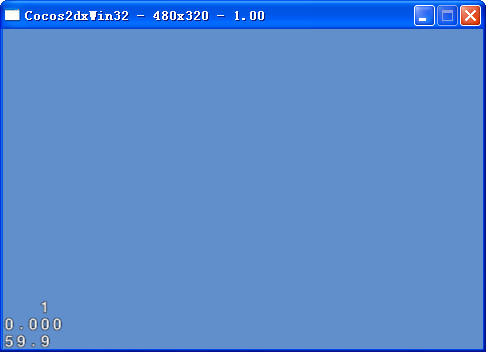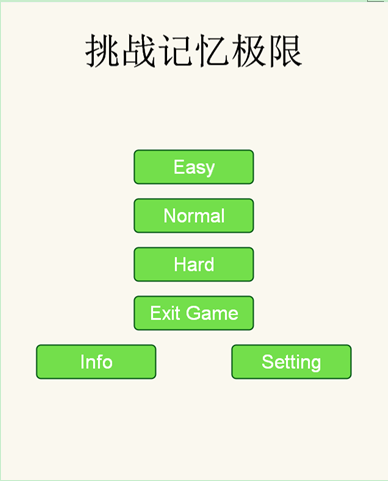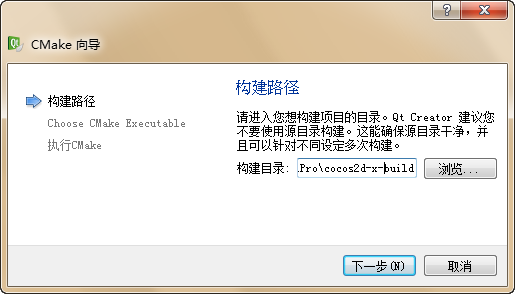http://www.jb51.cc/article/p-mpzqadut-xy.html
做一款像素游戏项目,需要读取TMX文件中的阻挡区域,生成Box2d的fixture,来做阻挡 使用cocos2dx版本: 2.2.2
1.在tmx文件中创建一个”Physics”的层,用来存放编辑器中生成的各种阻挡块
编辑器中主要有polygone,polyline,Box和circle4种,其实Box也属于polygone
2.我的tiled map 版本Version 0.9.1
查看tmx文件,增加的层属于是不会被渲染的,所以添加多个层对效率也没有什么影响,我们此处叫”Physics”
上图的4个图形,分别对应下图XML的4个
polyline读取一个初始点x,y,然后读取一些列相对于初始点的偏移值
Box读取x,width,height
circle读取起始点x,y,外加直径width(height)足以,因为无法构造椭圆的b2Shape,所以我们构造圆
polygon读取起始点x,y,然后读取一些列相对于初始点的偏移值,类似于polyline
3.cocos2dx中解析此文件的时CCTMXXMLParser.cpp 大概在623行,但是代码中只解析了polygon,polyline和circle处解析代码为空,我们在此处添加完全
[cpp] view plain copy 在CODE上查看代码片派生到我的代码片
else if (elementName == "polygon")
{
// find parent object's dict and add polygon-points to it
ObjectGrouP* objectGroup = (ObjectGrouP*)m_pObjectGroups->lastObject();
CCDictionary* dict = (CCDictionary*)objectGroup->getobjects()->lastObject();
// get points value string
const char* value = valueForKey("points",attributeDict);
if(value)
{
CCArray* pPointsArray = new CCArray;
// parse points string into a space-separated set of points
stringstream pointsstream(value);
string pointPair;
while(std::getline(pointsstream,pointPair,' '))
{
// parse each point combo into a comma-separated x,y point
stringstream pointStream(pointPair);
string xStr,yStr;
char buffer[32] = {0};
CCDictionary* pPointDict = new CCDictionary;
// set x
if(std::getline(pointStream,xStr,','))
{
int x = atoi(xStr.c_str()) + (int)objectGroup->getPositionOffset().x;
sprintf(buffer,"%d",x);
CCString* pStr = new CCString(buffer);
pStr->autorelease();
pPointDict->setobject(pStr,"x");
}
// set y
if(std::getline(pointStream,yStr,'))
{
int y = atoi(yStr.c_str()) + (int)objectGroup->getPositionOffset().y;
sprintf(buffer,y);
CCString* pStr = new CCString(buffer);
pStr->autorelease();
pPointDict->setobject(pStr,"y");
}
// add to points array
pPointsArray->addobject(pPointDict);
pPointDict->release();
}
dict->setobject(pPointsArray,"points");
pPointsArray->release();
dict->setobject(dict->objectForKey("points"),"polygonPoints");
}
}
else if (elementName == "polyline")
{
// find parent object's dict and add polyline-points to it
// ObjectGrouP* objectGroup = (ObjectGrouP*)m_pObjectGroups->lastObject();
// CCDictionary* dict = (CCDictionary*)objectGroup->getobjects()->lastObject();
// Todo: dict->setobject:[attributeDict objectForKey:@"points"] forKey:@"polylinePoints"];
// ------Added by Teng.start
// find parent object's dict and add polygon-points to it
ObjectGrouP* objectGroup = (ObjectGrouP*)m_pObjectGroups->lastObject();
CCDictionary* dict = (CCDictionary*)objectGroup->getobjects()->lastObject();
// get points value string
const char* value = valueForKey("points","polylinePoints");
}
// ------Added by Teng.end
}
else if (elementName == "ellipse")
{
// ------Added by Teng.start
// Do nothing...
ObjectGrouP* objectGroup = (ObjectGrouP*)m_pObjectGroups->lastObject();
CCDictionary* dict = (CCDictionary*)objectGroup->getobjects()->lastObject();
CCObject *obj = new CCObject;
dict->setobject(obj,"ellipse");
obj->release();
// ------Added by Teng.end
}
4.剩下的就是我们在程序中获取出这些阻挡区域了
[cpp] view plain copy 在CODE上查看代码片派生到我的代码片
bool Map::createPhysical(b2World *world)
{
b2BodyDef body_def;
body_def.type = b2_staticBody;
body_def.position.SetZero();
mBody = world->CreateBody(&body_def);
// 找出阻挡区域所在的层
ObjectGrouP* group = mTiledMap->objectGroupNamed("Physics");
CCArray* array = group->getobjects();
CCDictionary* dict;
CCObject* pObj = NULL;
CCARRAY_FOREACH(array,pObj)
{
dict = (CCDictionary*)pObj;
if (!dict)
continue;
b2FixtureDef fixture_def;
StaticBlockObject *sb_obj = new StaticBlockObject();
sb_obj->density = 1.0f;
sb_obj->friction = 0.2f;
sb_obj->restitution = 0.f;
// 读取所有形状的起始点
float x = ((CCString*)dict->objectForKey("x"))->floatValue();
float y = ((CCString*)dict->objectForKey("y"))->floatValue();
b2Shape* shape = NULL;
//多边形
CCObject *polygon = dict->objectForKey("polygonPoints");
if (polygon) {
CCArray *polygon_points = (CCArray*)polygon;
std::vector<b2Vec2> points;
// 必须将所有读取的定点逆向,因为翻转y之后,三角形定点的顺序已经逆序了,构造b2polygonShape会crash
int c =polygon_points->count();
points.resize(c);
c--;
CCDictionary* pt_dict;
CCObject* obj = NULL;
CCARRAY_FOREACH(polygon_points,obj)
{
pt_dict = (CCDictionary*)obj;
if (!pt_dict) {
continue;
}
// 相对于起始点的偏移
float offx = ((CCString*)pt_dict->objectForKey("x"))->floatValue();
float offy = ((CCString*)pt_dict->objectForKey("y"))->floatValue();
points[c--] = (b2Vec2((x + offx) / PTM_RATIO,(y-offy) / PTM_RATIO));
}
b2polygonShape *ps = new b2polygonShape();
ps->Set(&points[0],points.size());
fixture_def.shape = ps;
shape = ps;
sb_obj->shape = StaticBlockObject::ST_polyGON;
} else if (polygon = dict->objectForKey("polylinePoints")){
CCArray *polyline_points = (CCArray*)polygon;
std::vector<b2Vec2> points;
CCDictionary* pt_dict;
CCObject* obj = NULL;
CCARRAY_FOREACH(polyline_points,obj)
{
pt_dict = (CCDictionary*)obj;
if (!pt_dict) {
continue;
}
float offx = ((CCString*)pt_dict->objectForKey("x"))->floatValue();
float offy = ((CCString*)pt_dict->objectForKey("y"))->floatValue();
points.push_back(b2Vec2((x + offx) / PTM_RATIO,(y-offy) / PTM_RATIO));
}
b2ChainShape *ps = new b2ChainShape();
ps->CreateChain(&points[0],points.size());
fixture_def.shape = ps;
shape = ps;
sb_obj->shape = StaticBlockObject::ST_polyGON;
} else if (dict->objectForKey("ellipse")) {
float width = ((CCString*)dict->objectForKey("width"))->floatValue();
float height = ((CCString*)dict->objectForKey("height"))->floatValue();
b2CircleShape *ps = new b2CircleShape;
ps->m_p.Set((x+width/2) / PTM_RATIO,((y+height/2)) / PTM_RATIO);
ps->m_radius = width/2/PTM_RATIO;
fixture_def.shape = ps;
shape = ps;
sb_obj->shape = StaticBlockObject::ST_CIRCLE;
} else {
float width = ((CCString*)dict->objectForKey("width"))->floatValue();
float height = ((CCString*)dict->objectForKey("height"))->floatValue();
b2polygonShape *ps = new b2polygonShape;
ps->SetAsBox(width/2/PTM_RATIO,height/2/PTM_RATIO,b2Vec2((x+width/2)/PTM_RATIO,(y+height/2)/PTM_RATIO),0);
fixture_def.shape = ps;
shape = ps;
sb_obj->shape = StaticBlockObject::ST_polyGON;
}
fixture_def.density = sb_obj->density;
fixture_def.friction = sb_obj->friction;
fixture_def.restitution = sb_obj->restitution;
b2Fixture *fixture = mBody->CreateFixture(&fixture_def);
sb_obj->fixture = fixture;
if (shape) {
delete shape;
shape = NULL;
}
// Storage the Static block object.
mStaticBlockList.push_back(sb_obj);
}
return true;
}
附带上StaticBlockObject代码,这个主要用来记录阻挡的类型、属性,以后用来做阻挡判断
[cpp] view plain copy 在CODE上查看代码片派生到我的代码片
/** Storage fixture user data. use for b2Fixture user data. */
class iFixtureUserData
{
public:
typedef uint BodyType;
typedef uint FixtureType;
static const BodyType BT_Avata = 0x000; // no any use...
static const FixtureType FT_None = 0x000;
static const BodyType BT_Map = 0x1000;
static const FixtureType FT_STATIC_OBJ = 0x1F01;
static const FixtureType FT_DYNAMIC_OBJ = 0x1F02;
//
static const BodyType BT_Role = 0x2000;
static const BodyType BT_Bullet = 0x2100;
static const FixtureType FT_BODY = 0x2F01;
static const FixtureType FT_FOOT = 0x2F02;
public:
iFixtureUserData(BodyType body_type,FixtureType fixture_type):
mBodyType(body_type),mFixtureType(fixture_type){
}
virtual ~iFixtureUserData() {
}
inline BodyType getBodyType() { return mBodyType; }
inline FixtureType getFixtureType() { return mFixtureType; }
protected:
BodyType mBodyType;
FixtureType mFixtureType;
};
/** Block object. specify a block area in physics engine. */
class StaticBlockObject : public iFixtureUserData {
public:
StaticBlockObject():
iFixtureUserData(BT_Map,FT_STATIC_OBJ),fixture(NULL),half_block(false)
{
}
enum ShapeType {
ST_polyGON = 0,ST_CIRCLE = 1,ST_EDGE = 2
};
ShapeType shape; // The shape type.
float density;
float friction;
float restitution;
b2Fixture *fixture;
bool half_block;
};
typedef std::vector<StaticBlockObject *> StaticBlockList;
因为是从代码中直接复制的,但无非实现了下面几个功能:
1.在map中找到”Physics”层
2.遍历读取所有图形的起始点,并分析是何种图形,并读取相应的属性
3.用读取的每个图形来构造b2Shape,用地图的body来构造b2Fixture
其中有几个地方需要注意:
1.因为Box2d和游戏中使用的单位不同,分别是米和像素,所以要用PTM_RATIO宏来转换
2.polygon读取的所有点来构造b2polygonShape,这个序列必须是读取的所有点的反向列表,否则会报一个计算center断言错误
产生这个的原因是因为:tmx中的顶点坐标系是地图左上角,游戏中是左下角,CCTMXXMLParser.cpp中解析起始点的时候,自动帮我们转为游戏中的坐标
于是tmx中的1,2,3,4的顶点序列,构成的区域是凸多边形的内部,转换后就成为了4,3,2,1,构成的是凸多边形的外部
polyline因为不是闭合的,无所谓逆向一说
[cpp] view plain copy 在CODE上查看代码片派生到我的代码片
std::vector<b2Vec2> points;
// 必须将所有读取的定点逆向,因为翻转y之后,三角形定点的顺序已经逆序了,构造b2polygonShape会crash
int c =polygon_points->count();
points.resize(c);
c--;
CCDictionary* pt_dict;
CCObject* obj = NULL;
CCARRAY_FOREACH(polygon_points,obj)
{
pt_dict = (CCDictionary*)obj;
if (!pt_dict) {
continue;
}
// 相对于起始点的偏移
float offx = ((CCString*)pt_dict->objectForKey("x"))->floatValue();
float offy = ((CCString*)pt_dict->objectForKey("y"))->floatValue();
points[c--] = (b2Vec2((x + offx) / PTM_RATIO,(y-offy) / PTM_RATIO));
}
b2polygonShape *ps = new b2polygonShape();
ps->Set(&points[0],points.size());
fixture_def.shape = ps;
5.传个效果图:




